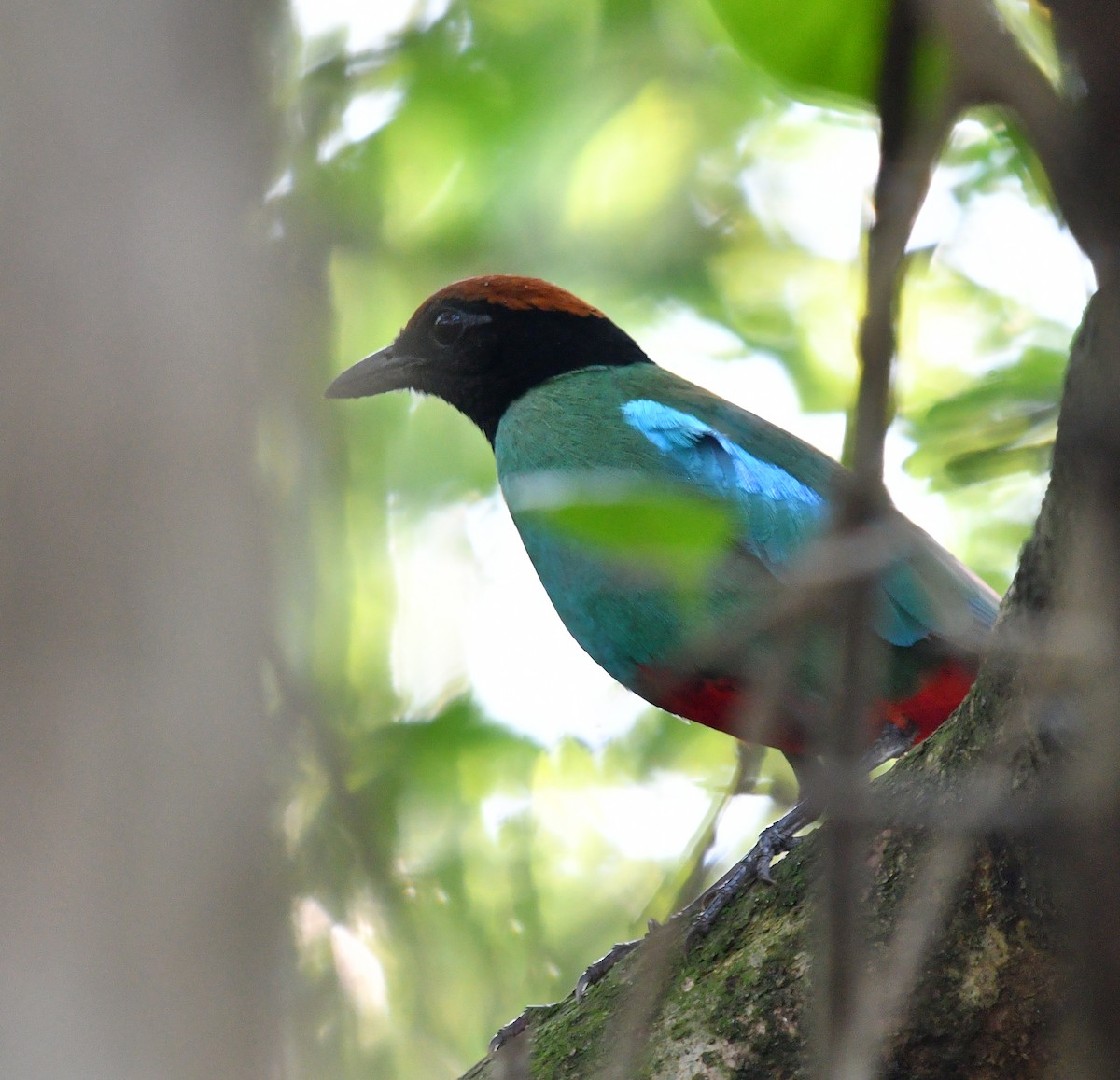Hooded Pitta
A species of Typical Pittas Scientific name : Pitta sordida Genus : Typical Pittas
Hooded Pitta, A species of Typical Pittas
Botanical name: Pitta sordida
Genus: Typical Pittas
Content
Description General Info
 Photo By Rofikul Islam
Photo By Rofikul Islam Description
The hooded pitta (Pitta sordida) is a passerine bird in the family Pittidae. It is common in eastern and southeastern Asia and maritime Southeast Asia, where it lives in several types of forests as well as on plantations and other cultivated areas. It is a green bird with a black head and chestnut crown. It forages on the ground for insects and their larvae, and also eats berries. It breeds between February and August, the pair being strongly territorial and building their nest on the ground. Incubation and care of the fledglings is done by both parents. The bird has a wide range, and the International Union for Conservation of Nature has assessed its conservation status as being of "least concern". 
Size
19 cm
Nest Placement
Ground
Habitat
The hooded Pitta typically inhabits lowland, hill, and lower montane rainforests, including regions with dense understory, gallery forests, monsoon forests, and scrub. Adaptable to altered environments, the species can also be found in secondary growth areas, overgrown plantations, and even clearings with cultivation. Its habitat extends to forested areas on limestone and is occasionally observed in mangroves. The hooded Pitta shows a preference for lower elevations in most of its range, with higher altitudes primarily occupied during migration.
Dite type
Insectivorous
General Info
Feeding Habits
Bird food type
Behavior
Hooded pittas can reach a length of 16 to 19 cm (6.3 to 7.5 in) and a weight of 42 to 70 g (1.5 to 2.5 oz). It has a black head, chestnut crown and green body and wings. Its diet consists of various insects (including their larvae), which they hunt on the ground, and berries. In the breeding period, which lasts from February to August, they build nests on the ground; both parent take care of the eggs and the fledglings. They are highly territorial and their fluty double-noted whistle calls ("qweeek-qweeek") can be constantly heard from their territories, sometimes throughout the nights. The International Union for Conservation of Nature is concerned in particular about the ongoing loss of habitat that this bird suffers, which is reducing its numbers, but has rated it as being a "least concern species" because the rate of population decline is insufficient to warrant a threatened category. In captivity, hooded pittas mix well with other species although they may be aggressive toward other pittas when breeding. In London Zoo they are kept in a large walk-through aviary in the restored Blackburn Pavilion bird house, while at the Durrell Wildlife Park they are in a large walk-through exhibit with birds such as Palawan peacock-pheasants and white-rumped shamas. 

 Photo By Rofikul Islam
Photo By Rofikul Islam Scientific Classification
Phylum
Chordates Class
Birds Order
Perching birds Family
Pittas Genus
Typical Pittas Species
Hooded Pitta